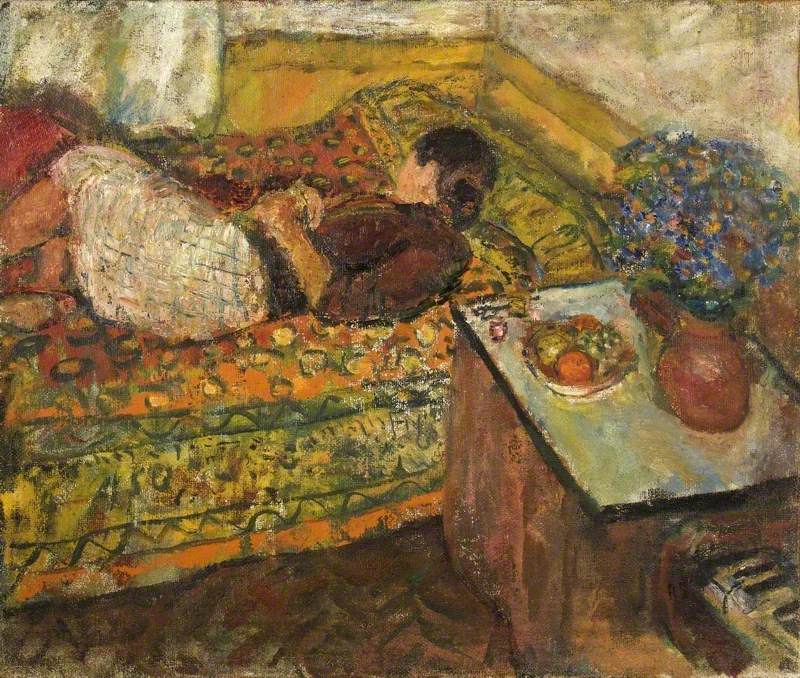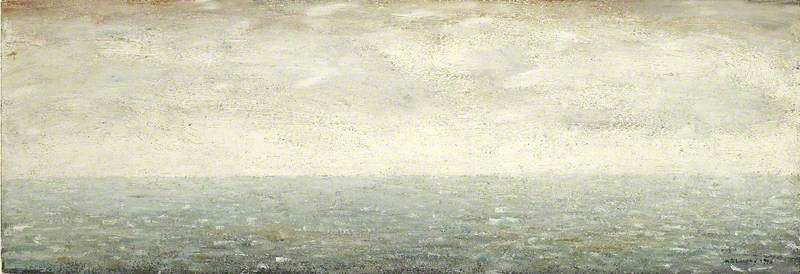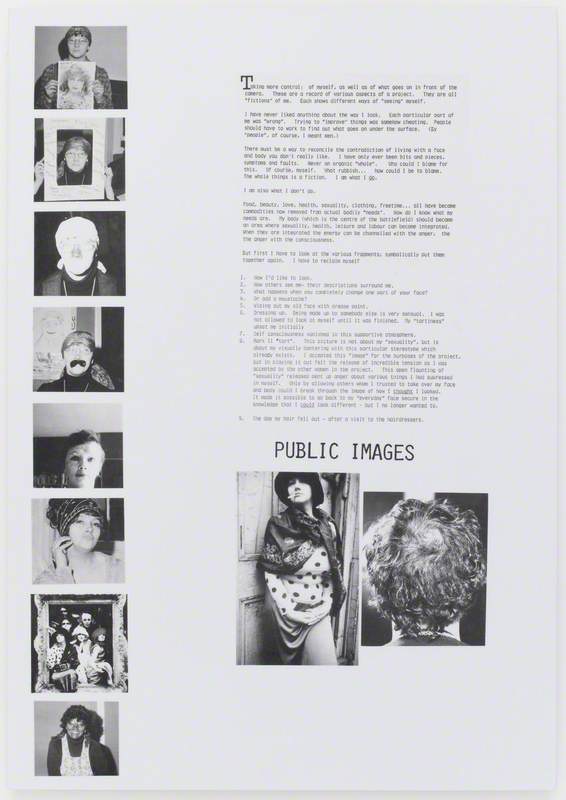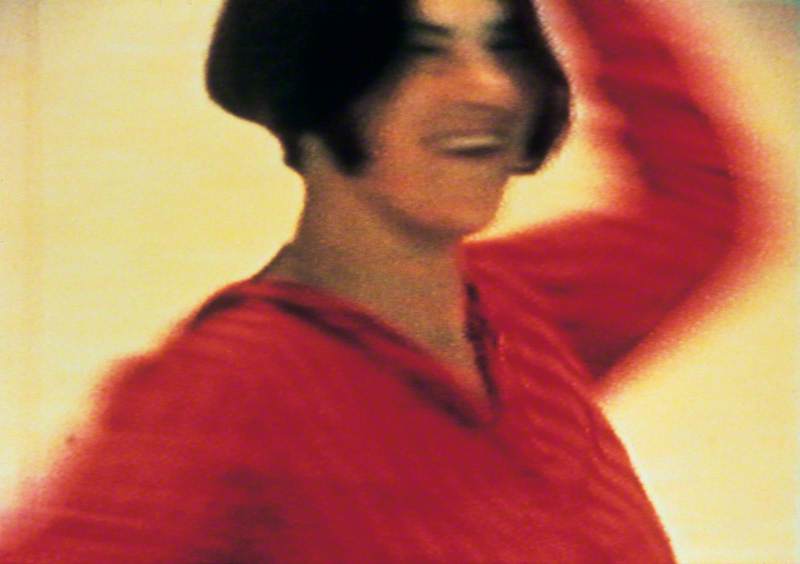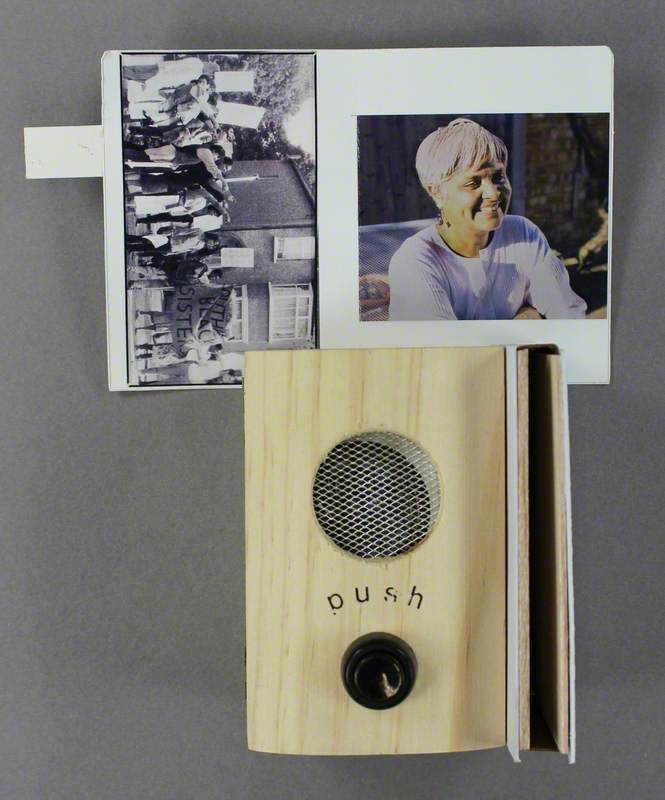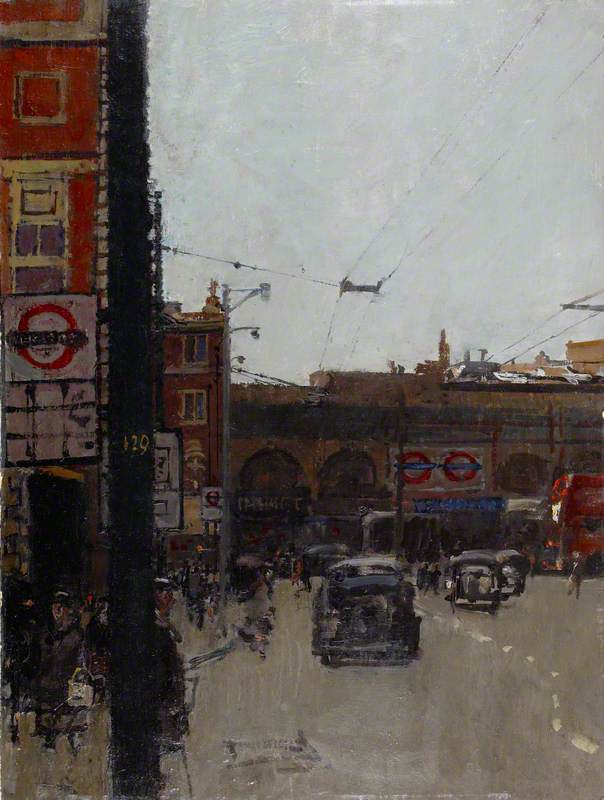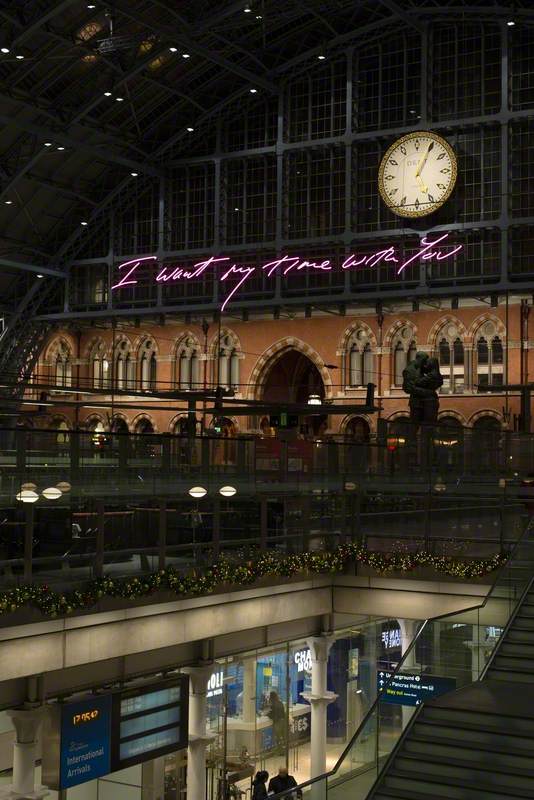The Arts Council Collection is the most widely circulated national loan collection of modern and contemporary British art. Founded in 1946, the Collection reaches the broadest possible audience through long loans to public institutions, exhibition loans, touring exhibitions, as well as digital and print publications.
Art Unlocked is an online talk series by Art UK in collaboration with Bloomberg Philanthropies. This Curation is based on a talk by Beth Hughes, Curator at the Arts Council Collection, on 27th April 2022. You can find a recording at: https://youtu.be/ql8VDr0jN-c
-
Siesta 1938
Ruskin Spear was regarded as one of the foremost British portrait painters of his day. The chief subject of his work was the working-class people of Hammersmith where he spent much of his time befriending and painting individuals there. Often depicting humorous reflections on modern life, Spear’s painting examples the human connection and trust he built with his subjects. Siesta is one of the founding works of the Arts Council Collection and shows his wife, Mary, the patterns of her clothing melding into the domestic setting.
Ruskin Spear (1911–1990)
Oil on canvas
H 63 x W 75 cm
Arts Council Collection, Southbank Centre
-
Seascape 1965
When someone thinks ‘working-class artist’ they are likely to think of Lowry first. Born in Lancashire in 1887 he is best known for paintings of urban landscapes peopled with often unusual figures. In his later years, he spent many hours staring at the North Sea; its turbulence represented for him ‘the battle of life’.
Laurence Stephen Lowry (1887–1976)
Oil on panel
H 26.7 x W 77.8 cm
Arts Council Collection, Southbank Centre
-
Beyond the Family Album 1979
Born in Essex to a working-class family, Spence’s parents were factory workers and sent her to secretarial college, which led to her working as a secretary in a photographer’s studio. Beyond the Family Album (1979), is a series of laminated panels presented as a collage of short texts, personal photographs and ephemera. Taking the familiar construct of the family album, Spence turns it on its head exposing the hidden labour shouldered by working-class women through childcare, homemaking and generally existing in a patriarchal society.
Jo Spence (1934–1992)
Colour transparencies & black & white negatives
Arts Council Collection, Southbank Centre
-
Why I Never Became a Dancer 1995
Like the majority of Tracey Emin’s works, Why I Never Became a Dancer is autobiographical. Emin recalls her teenage bid to leave the seaside town of Margate, where she had grown up, by entering the British Dancing Championship. However, as she danced, she was humiliated by a group of boys chanting ‘Slag, Slag, Slag’. In the video, her final words are ‘Shane, Eddy, Tony, Doug, Richard ... This one’s for you’ as she dances away from the small town world. She recalls: ‘As a fifteen year old girl I had outgrown not just my home town but also the men in it. I’m NOT A SLAG, just loved sex, that’s all.’
Tracey Emin (b.1963)
Single screen projection & sound (6 minutes 40 seconds, shot on Super 8 & transferred to DVD)
Arts Council Collection, Southbank Centre
-
Pastoral Interlude, No. 4 1988
Part of a series of photographs, Pastoral Interlude reflects the artist's experience of being a black British woman in the English countryside. The photographs, featuring picturesque countryside, show Pollard taking part in outdoor pursuits like rambling and fishing. These images have been juxtaposed with jarring texts referring to the history of black people in Britain. Pollard says of the work: 'It's as if the black experience is only lived within an urban environment. I thought I liked the Lake District, where I wandered lonely as a black face in a sea of white. A visit to the countryside is always accompanied by a feeling of unease, dread.'
Ingrid Pollard
Hand-tinted silver print & text
H 51 x W 51 cm
Arts Council Collection, Southbank Centre
-
Maelfa 2010
In 2009 Edwards undertook a residency in the Maelfa shopping centre in Llandeyrn on the outskirts of Cardiff, close to where he grew up. Built in the 1970s around a block of high-rise flats in a council estate, this shopping centre was once well used but had since fallen into disrepair. This meditative short film saturated in colour leads us to reflect on our local community and the architecture that once offered a promising future.
Sean Edwards (b.1980)
Single channel HD video (15 minutes)
Arts Council Collection, Southbank Centre
